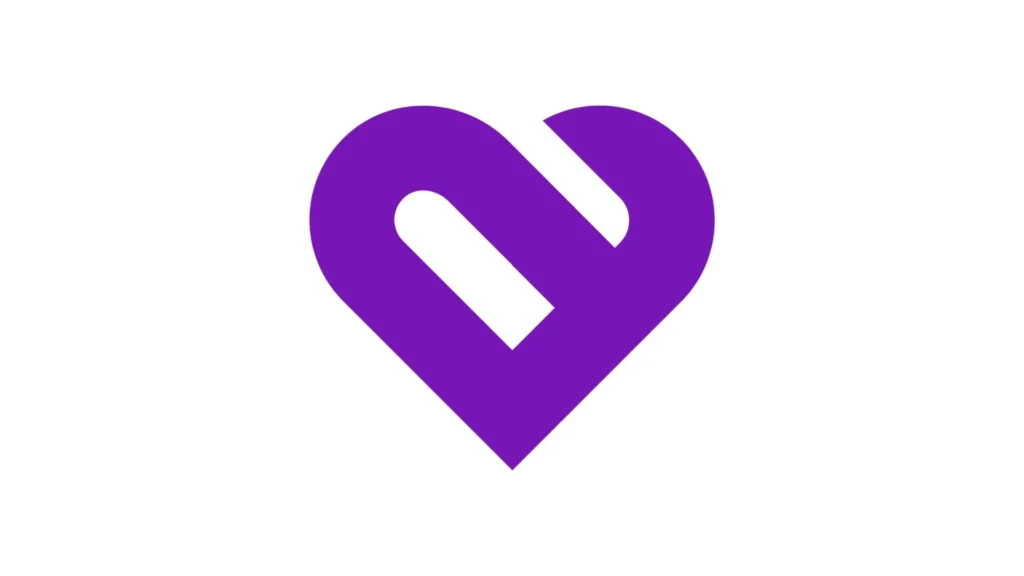One of the most formidable tasks in purchasing a unified communications platform is researching to see which healthcare technology vendors have the features that fit your buying criteria. Since there are many health communication platform products in the marketplace, one way to identify which are the top unified communication platforms is to refer to independent, non-partisan research. Another approach is to ask colleagues for their recommendations. Other requirements that should be taken into consideration when evaluating digital patient engagement platforms are the vendor’s track record, technical expertise and competency, their ability to continuously improve upon their product, and security program.
Narrowing down the top unified communication platforms
A respected, non-partisan resource in identifying an effective patient communication platform is KLAS Research, a third-party, healthcare IT research company that ranks healthcare tech companies based on feedback from real customers. Vendors are evaluated and ranked on a variety of criteria including their ability to keep promises, product reliability, and customer service. Updated annually, these reports are available at klasresearch.com under Best in KLAS Rankings. Another way to identify highly rated solutions is to discuss your needs with trusted colleagues. Professional affiliations such as CHIME, AMDIS, or HIMSS are other good resources.
As you build your list of possible vendors, decide if you will be issuing an RFP (request for proposal) to multiple vendors to help you compare vendors fairly to one another in an “apples-to-apples” approach. Using a structured process like this can help ensure consistency and that the pricing quoted by each vendor is comparable to the services offered. Vetting at least three vendors gives you a good number of options and of course, you can vet more companies, but keep in mind, that the more vendors to evaluate, the more time, resources, and energy will be required from your team, prolonging the process. Undoubtedly, once you have a list of vendors who are of interest to your organization, you will conduct research on each vendor’s website. Keep in mind you most likely can find out what features and capabilities each solution offers but for certain detailed information, you will need to talk to a sales representative.
Research the patient communication platform’s reputation and track record
Once you have determined your process for evaluating vendors, check the vendor’s record of viability and proven success. Make sure any unified communications platform you are interested in is being used by healthcare organizations similar to yours to know whether the vendor is capable of servicing an organization of your size and type. Make sure the vendor can provide you with customer references from reputable healthcare organizations. Another key consideration is how many customers the vendor has and how long the healthcare communication platform has been in business. A company that is new is not going to have as much experience as a company that has been in business for years with a history of effective patient communication learning behind them.
Research whether the company developed the solution or acquired it. If the solution was bought and is one of many products in a company’s portfolio, they may not have the expert personnel to troubleshoot and maintain the product. If the vendor didn’t develop the technology, investigate whether they have a good track record with patient communication technology. A company that developed and created the product is more likely to provide you with customization, scalability, and upgrades. Another question to ask is does the vendor have any relationships with reputable EHR systems? This is important since integration with your existing tech stack will most likely be necessary.
Technical competency is key to top unified communication platforms
It is vital that the vendor you choose has the personnel with the technical expertise and competency to integrate the patient communication platform with your existing technology. A competent vendor can handle multiple integration types whether they be API, FHIR, HL7v2, or flat files, and will recommend solutions based on your company’s individual needs and circumstances. If a vendor claims only API integrations are necessary and doesn’t discuss healthcare data standard-based mechanisms, or other sources, they may not have the technical capabilities you need.
Ask potential vendors about the work experience of their integration team and whether they have healthcare EHR experience. Given the importance of integration with the EHR, engineers experienced with specific EHRs will understand the technical nuances of the software that serves as the cornerstone of the hospital tech stack. Since it’s important for the vendor and customer to communicate their common goals when implementing integrations to achieve successful outcomes, check that the vendor’s integration team can provide enough people to service your needs, use your tools, and have a policy of transparency.
Another criteria to keep in mind is whether the vendor’s integration team is in-house or outsourced. A vendor with an in-house team is more likely to deliver on time and with fewer issues. Outsourced teams may not know the product as well, leading to delays. When it comes to measuring reliability and uptime, ask your vendor if they can easily achieve high uptimes with high availability and if they are measured separately. Not every vendor will have reliable escalation tools in place for outages so ask potential vendors how they manage multiple feeds and outages.
One of the most important benefits of unified communication platforms is that they enable your organization to be successful. Make sure the solution is easy to use and if the company provides user-friendly templates, which will enable you to turn on new workstreams quickly. Check whether you need to contact the vendor every time you need to customize the solution or whether you are capable of executing changes yourself. Ask the vendor should if they provide any ongoing training or knowledge resources. Lastly, ask the vendor what happens to your very important data if you decide to no longer be a customer. For security reasons, this is one of the most important issues to answer upfront.
How to maintain and sustain your unified communications platform
In order to keep your unified communications platform operating optimally, you want a vendor that offers attentive, responsive customer service. Below are some key services a vendor should provide to ensure your patient communication platform investment is fully supported.
- Documentation such as support articles, free online courses, and a comprehensive knowledge base to make it easy for your team to learn about the product and easily answer common questions.
- A customer success team that will be your point of contact for any technical and service needs.
- A customer support process so your team can ask questions and know when to expect a response.
- A timely process for configuration changes whether you can make them yourself or need to contact the vendor.
- A success plan after the unified communications platform’s launch such as detailed project management/onboarding processes to ensure you continue to receive ongoing value for your investment.
- Transparency about extra expenses such as migration and onboarding costs in addition to offboarding costs if you decide to no longer use the product.
In addition to support services, since technology, patient needs, and the healthcare industry is ever-evolving, look for vendors who make continual updates and release new products with the latest innovations. The last thing you want is to purchase a patient communication platform that will become dated and inefficient. Another innovation you want potential vendors to be incorporating into their platform is cutting-edge technology such as AI capabilities. Along with ongoing product development, ensure your vendor has partnerships with leading healthcare companies to keep you at the forefront of the ever-changing healthcare industry.
Why patient communication security is key to the health of a unified communications platform
Security is critical in patient communications and credible vendors maintain a comprehensive information security program covering all aspects of information security practices, policies, and procedures. The 2021 HIMSS Healthcare Cybersecurity Survey discovered that although the healthcare industry has made progress in increasing patient communication security and other forms of cybersecurity, a “myriad of challenges, including tight budgets, aging infrastructure and an increase in social engineering and ransomware attacks,” still remain. The report discovered that for healthcare organizations of all sizes, phishing and ransomware are the most significant security issues with financial data often the most wanted type of intelligence by hackers, just ahead of employee information and patient data.
Healthcare cybersecurity attacks increased in 2021 and experts believe that cyberattacks on patient communication cybersecurity and other healthcare security systems are expected to rise in 2022. The U.S. Department of Health and Human Services keeps a record of all healthcare security breaches and cyberattacks and for 2021, they reported 18 breaches and attacks affecting at least 500 people. One of the reasons for cyberattacks is the limited resources allocated to security in the healthcare industry. Although most of the 2021 HIMSS Healthcare Cybersecurity Survey poll respondents (59%) reported that their 2021 cybersecurity budgets increased, this still leaves 34% of health systems with no change in their security spending, and an unfortunate 6% of respondents who reported their cybersecurity budgets were reduced.
Cybercriminals are not always executing highly sophisticated hacks. Many times, they are just exploiting IT weaknesses that healthcare organizations haven’t addressed. As increasingly more cyber-attacks infiltrate healthcare, organizations find themselves in the position of reacting instead of being proactive. “Our advancement towards robust healthcare cybersecurity is stymied by tight budgets, growing legacy technology footprints, and a haphazard patchwork of security controls,” said HIMSS researchers. “Our healthcare organizations’ vulnerabilities are growing, yet more progress needs to be made to proactively detect and manage vulnerabilities.”
Security and compliance are crucial to protecting your investment in a healthcare communication platform
When it comes to how much a security breach costs health systems, IBM reported in their annual 2021 Cost of a Data Breach Report that a typical healthcare security breach averaged $9.4 million in 2021, an increase of $2 million from 2020. For ransomware attacks, the average cost is $4.6 million. The report also stated that healthcare security breaches were the most expensive out of any industry.
Clearly, when vetting a healthcare communication platform, you want to ensure that the vendor is invested in the best cybersecurity practices and protections available today such as HIPAA compliance and HITRUST Certification. Healthcare organizations need to be HIPAA compliant so they can safely send electronically protected health information (ePHI) between authorized users such as providers and patients through electronic messaging such as emails and texts. HITRUST is an approach to comprehensive information risk management and a compliance program to provide an integrated approach to ensuring all programs are aligned, maintained, and comprehensive to support an organization’s information risk management and compliance objectives.
In addition to these two trusted industry standards, another top security practice a vendor can employ include maintaining a trained Incident Response Team who can address potential security incidents in a timely manner thus protecting their customers’ data. When vetting potential platforms, ask the vendor how committed are they to deploying and enforcing the latest information security frameworks. Information security frameworks protect the integrity, confidentiality, and availability of data. Another valuable security practice to check is if the vendor is regularly tested and audited by independent third parties. This allows companies to objectively demonstrate that their systems follow rigorous requirements in privacy, security, integrity, and confidentiality.
The journey for a unified communications platform continues
Remember this is just the third step in the buyer’s journey. Now that you have reviewed the initial criteria to consider when evaluating patient communication platforms, identified key stakeholders involved, and are now researching vendors, you are well on your way to the next step of the buyer’s journey: Set a timeline.
Download the WELL Health® Definitive Buyer’s Guide to a Patient Communication Platform – a comprehensive outline of the buying process divided into six easy steps. Reviewing this guide will increase the odds that you will make the right vendor selection for your patient communication software.♥



